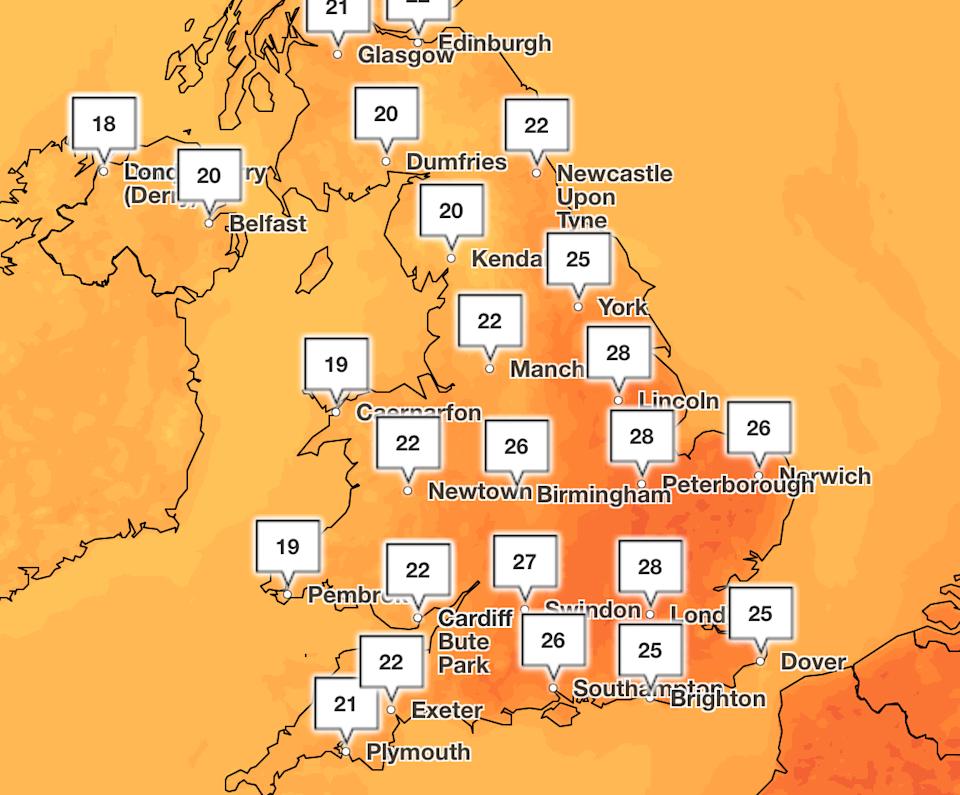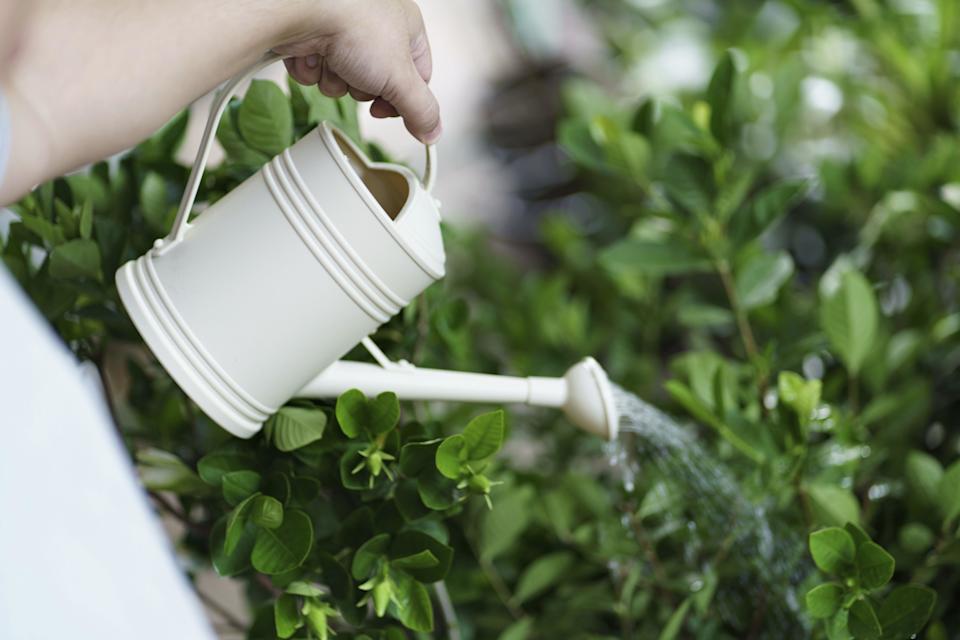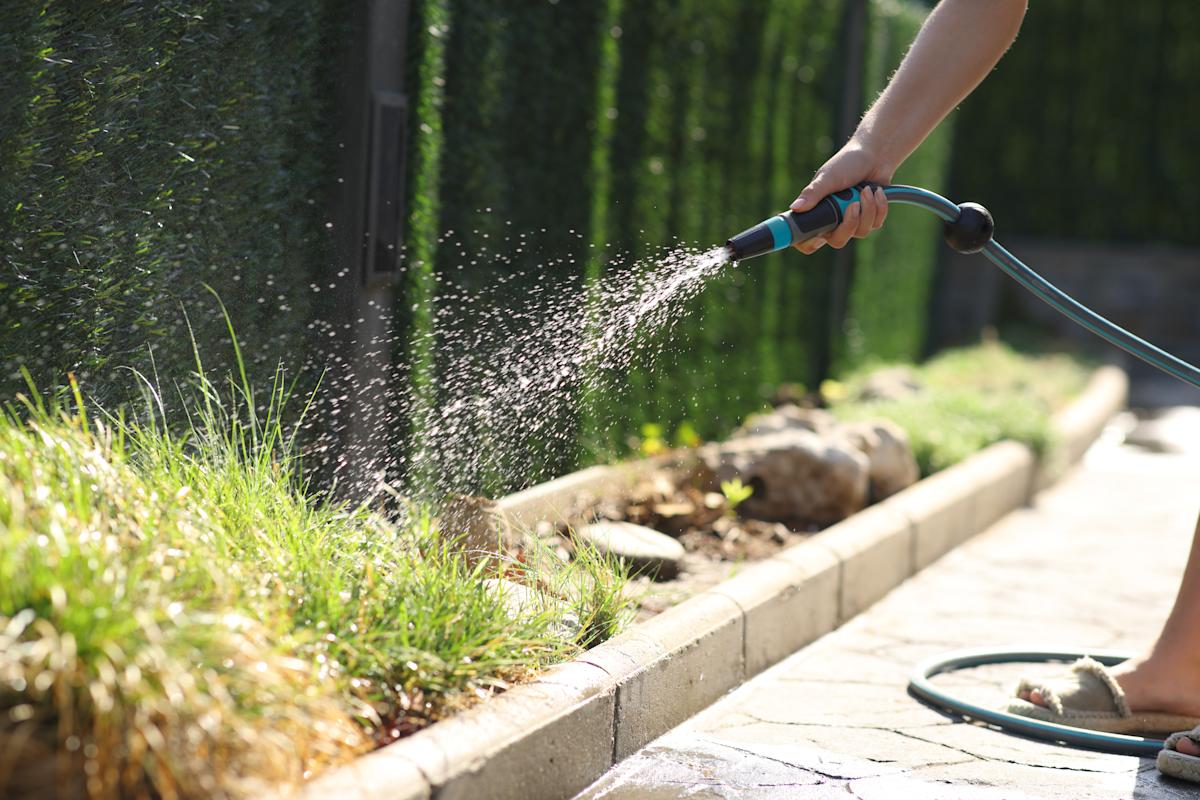Temperatures in the UK are set to soar again on Friday, with a peak of 30C forecast in some areas and hosepipe bans introduced in many parts of the country.
Much of the country has experienced sweltering weather in recent weeks, with many areas meeting heatwave conditions as temperatures surged to over 34C earlier this month.
While recent days have seen a dip in warmth, the very hot weather is set to return on Friday, but the Met Office is not predicting a heatwave this time.
In fact, after Friday, things get more unsettled, with heavy rain and thunderstorms set to sweep in over the weekend.
Met Office meteorologist Jonathan Vautrey said: “We’re starting to see south westerly winds come in, that’s bringing in hotter and more humid conditions, particularly in southern areas, we are going to see temperatures climbing again.

Temperatures will climb close to 30C in south-eastern areas on Friday afternoon. (Met Office)
“There is the potential for 30C around the London region by the time we reach Friday, other areas around south east England will push towards high 20s… Friday is looking to be the peak of the current hot spell.
“This heat is not going to be as widespread as what we’ve just come out of, areas to the north aren’t going to be seeing the same highs.”
Despite a chance of heavy showers over the weekend, hosepipe bans will remain, while others are set to come into force over the next few days.
What is a heatwave?
According to the Met Office, a heatwave is classed defined as a period of at least three consecutive days with daily maximum temperatures meeting or exceeding the heatwave temperature threshold.
This threshold varies depending on the county in England, Scotland and Wales, while Northern Ireland has its own single threshold.
Low pressure has now returned to the British Isles, with weather fronts expected to bring storms and showers over the weekend ⛈️
But it will still feel warm, with some mild and muggy nights on the way 🌡️ pic.twitter.com/Kr1eLY9dmK
— Met Office (@metoffice) July 16, 2025
For example, the threshold in London is 28C, while on the south east coast it is 27C. In Wales, Scotland and Northern Ireland, the threshold is 25C.
Where are the hosepipe bans?
Yorkshire Water was the first major water company to bring in a recent hosepipe ban, which came into effect on Friday, 11 July.
South East Water then announced a hosepipe ban in Kent and Sussex from Friday, 18 July, and Thames Water is bringing in a ban from Tuesday, 22 July for customers in Oxfordshire, Gloucestershire, most of Wiltshire and some parts of Berkshire.
Southern Water became the latest company to bring in a hosepipe ban from Saturday, 26 July, to protect rare chalk stream habitat.
The company said restrictions on hosepipes for activities such as watering gardens, filling paddling pools or washing cars would come in for households in Hampshire and the Isle of Wight from Monday, 21 July.
Am I allowed to water my garden during a hosepipe ban?
The short answer is yes – but, as the name makes clear, you should not water your garden with a hosepipe during a ban.
Hosepipe bans are officially known as temporary use bans, or TUBs – the rules of which are set out in the Water Industry Act 1991.
A TUB prohibits people from using a hosepipe that is connected to their mains water supply. Their purpose is to reduce demand for water when supplies are low.
As a result, you should not water your garden with a hosepipe and you could risk fines of up to £1,000 if you ignore a ban.
However, you can still use a watering can, a bucket, or pots and pans to water your plants.
How can I conserve water and look after my plants?
There are some very simple things you can do to keep your plants watered during periods of extreme heat or hosepipe bans.
One tip is to keep the water from cooking pasta and pour it (once cold) onto your plants. You can also use a water butt, which collects rainwater that can be used to water the garden.

You can still use watering cans for your garden during hosepipe bans. (PA)
Watering the base of your plants can also reduce evaporation and ensures water reaches the roots – where it is most needed, reducing the need for frequent feeding.
Watering early in the morning, when temperatures are lower, enables plants to absorb water, while a watering can ensures more focused watering and reduces water waste from using a hosepipe.
Weeds can also compete for water with the plants you actually want around so pulling them out can make sure the water goes where you want it to go.

